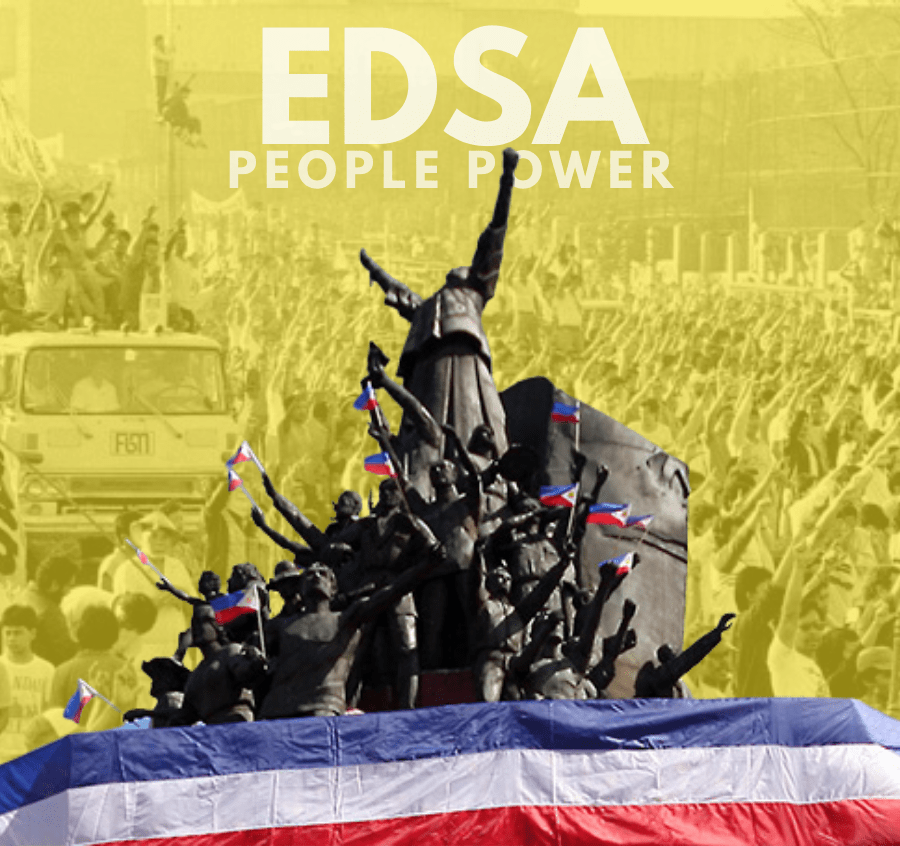Essential facts you need to know about the EDSA Revolution

For 20 years, Ferdinand Marcos ruled our country under his dictatorship. His years as the head of the government were and still are considered the darkest time for the Filipino people.
There are hundreds and thousands of recorded deaths due to torture and impunity under his regime. Journalists, who criticized him and his leadership, were either silenced or killed. What supporters considered a golden age for the Philippines is just a myth because, in reality, the economic state of our country at that time was at its worst.
Additionally, the assassination of opposition leader Benigno “Ninoy” Aquino, Jr. is one of the most significant events that caused a major shift in the collective mindset of the Filipinos. Herein starts the cry for democracy.

Marcos called for snap presidential elections. Corazon Aquino was chosen as the opposition’s presidential candidate. However, on February 20, 1986, the former considered himself as the victor and set to retain the presidency.
The dirty elections and the thirst for freedom from the dictatorship jumpstarted the first People Power Revolution.
1. The EDSA revolution lasted for four days
Millions of people, from all walks of life, gathered and demonstrated along Epifanio de Los Santos Avenue (EDSA) in Metro Manila.

February 22 is the start of the uprising. Defense Minister Juan Ponce Enrile discovered a conspiracy to incriminate him and officers involved in the Reform the Armed Forces Movement. Enrile and his comrades turned their backs against the dictator because of this. Hundred thousand, including priests and nuns, held a vigil back in EDSA that evening.
The next couple of days, the number of people who showed up along EDSA multiplied. Millions of people walked and prayed together along the avenue.
Finally, on February 25, Aquino was declared as the President of the Philippines. Marcos fled the country that same night.
2. The media played a big role in sparking the revolt
Enrile reached out to Cardinal Archbishop of Manila Jaime Sin for his support.
A message aired over Radio Veritas, a Roman Catholic radio station owned and operated by the Archdiocese of Manila, at around 9 p.m. on February 22. Cardinal Sin urged Filipinos to go to the section of EDSA between Camp Crame and Aguinaldo as support to the rebel leaders.
Despite the hesitation of the public, many people still went to the streets and participated in the demonstration.
Radio Veritas was an essential communications tool for the people supporting the rebels, informing them of the state’s movements and relaying requests for food, medicine, and supplies. Because of this, government troops targeted the station and destroyed their 50-kilowatt main transmitter.

People around the capital tuned in to Radio Veritas. Even after the station’s remaining running transmitter failed on February 23, the broadcasters were able to go to another undercover location and continue the reports for the rest of the revolt under the name Radio Bandido.
3. Considered as a “bloodless revolution”
The unified movement of the Filipinos pushed for Marcos’ downfall through song and slogans, flashing of the Laban sign (Cory Aquino’s campaign symbol), linked arms and rosaries, and human barricades.
Troops headed towards the rebels’ camp were blocked by nuns holding rosaries who knelt in front of the tanks. The troops asked them to clear the way but they stood their ground. Thus, the former retreated without any shots fired.

Many of the people during the revolution attempted friendships between the demonstrators and the military by giving them flowers.

When the angry mob began to enter the Palace, priests were quick to warn them not to be violent. The participation of religious entities and the rational mindset of the public are driving forces for the peaceful revolution.
The EDSA People Power also became a symbol and influence for other countries. It sparked the revolts against dictatorships in Asia. The Philippines’ bloodless revolution inspired the uprisings in other nations across the world.
This day marks the 36th year since the first People Power in EDSA. As we remember the collective action of the Filipino people, we also have to keep in mind that the democracy have today is from and because of the blood and tears of every single victim of the Martial Law and the Marcos administration.
Let us not waste the freedom that our people have fought for.
Mabuhay ang demokrasya!
Gabriela Alexandra, or better known as Alex, graduated from Bicol University with a degree in journalism. She is now navigating the world of adulthood and taking much bigger leaps in life.





